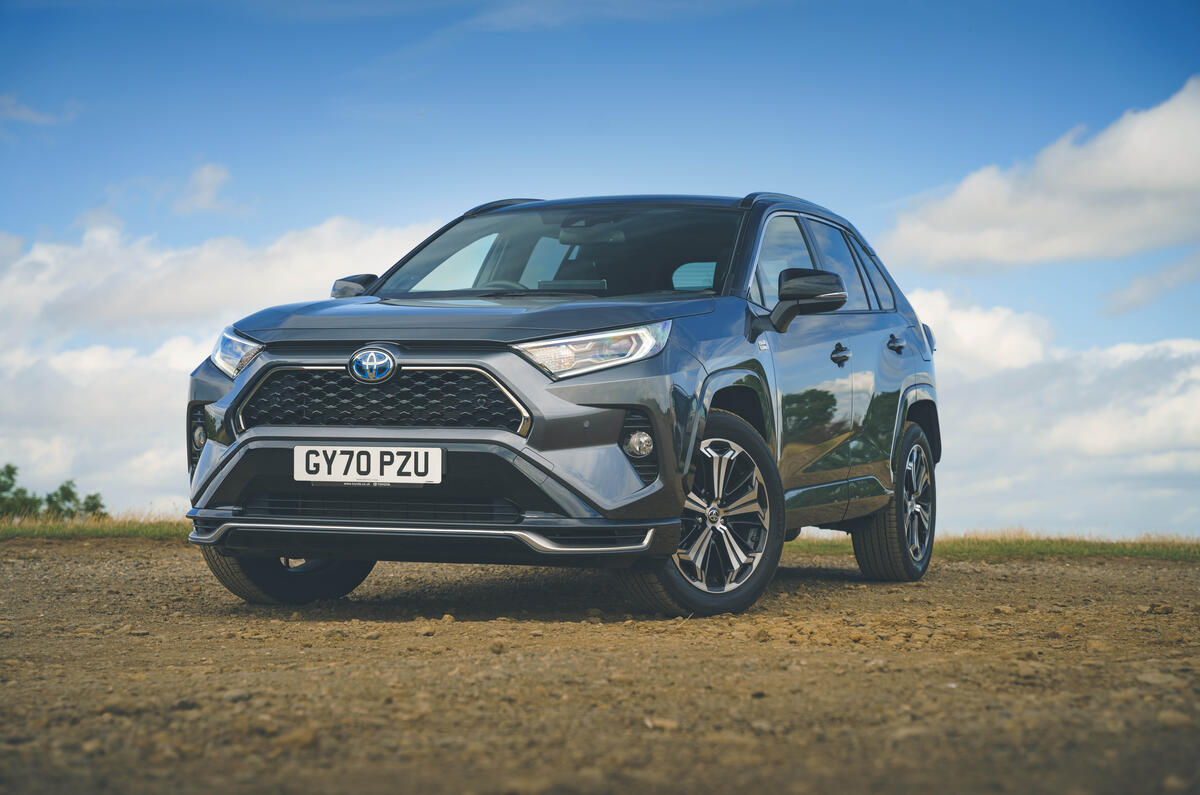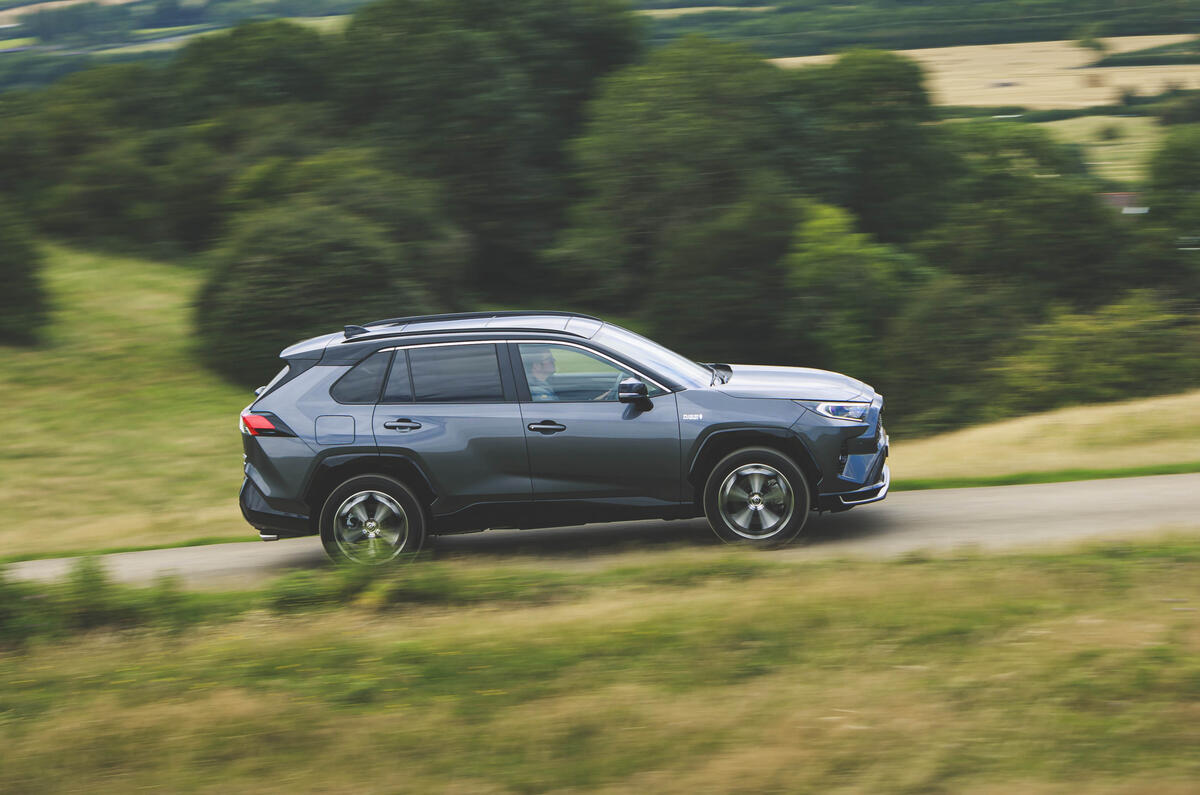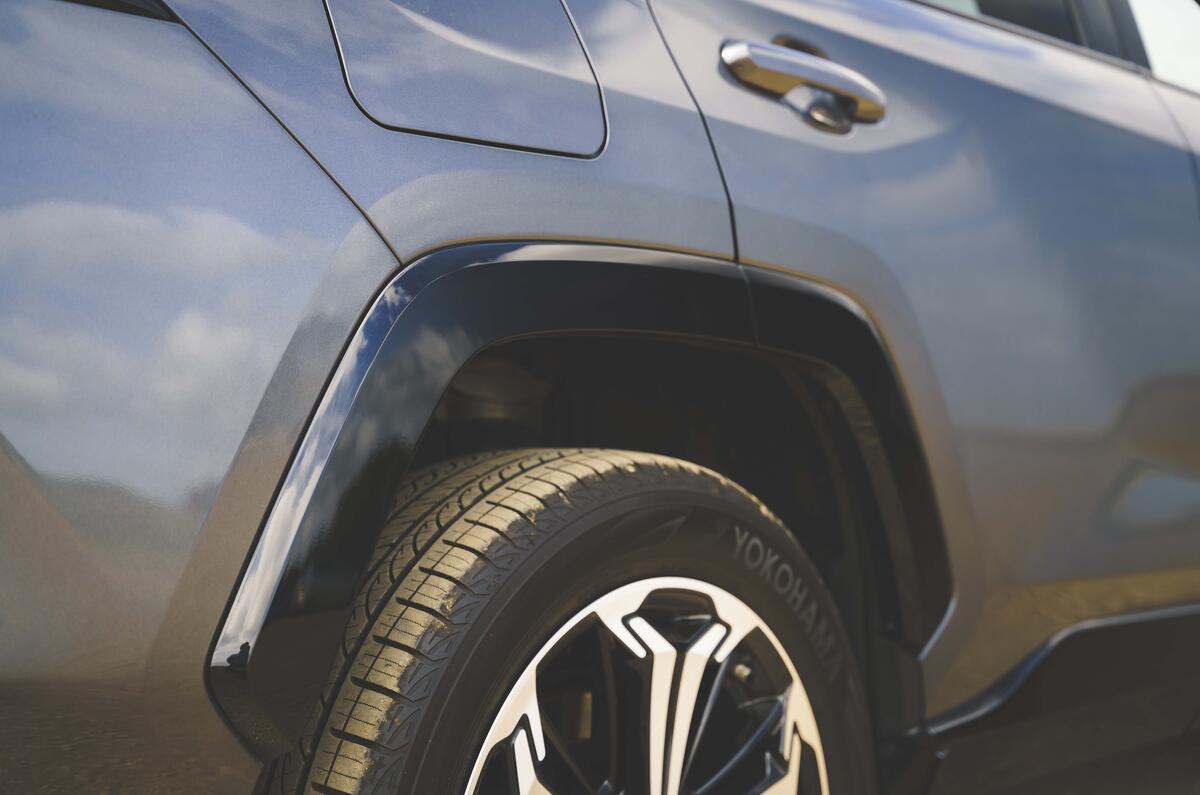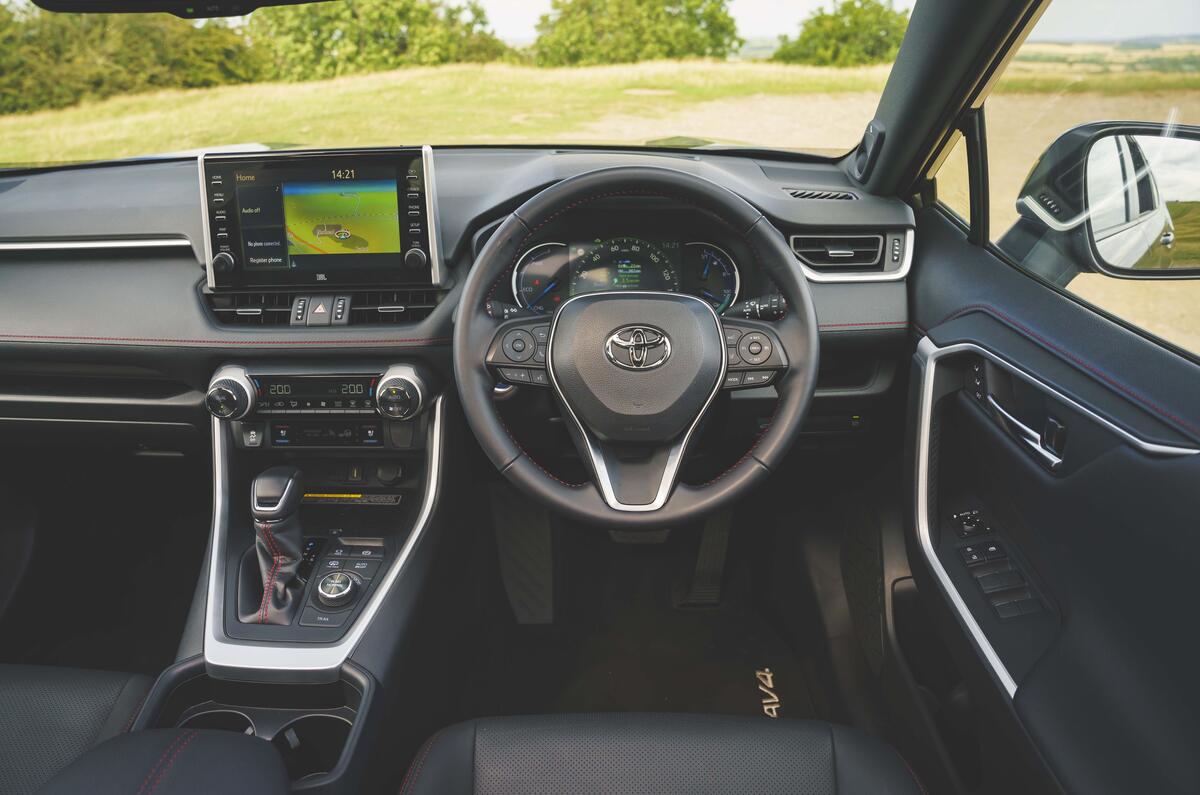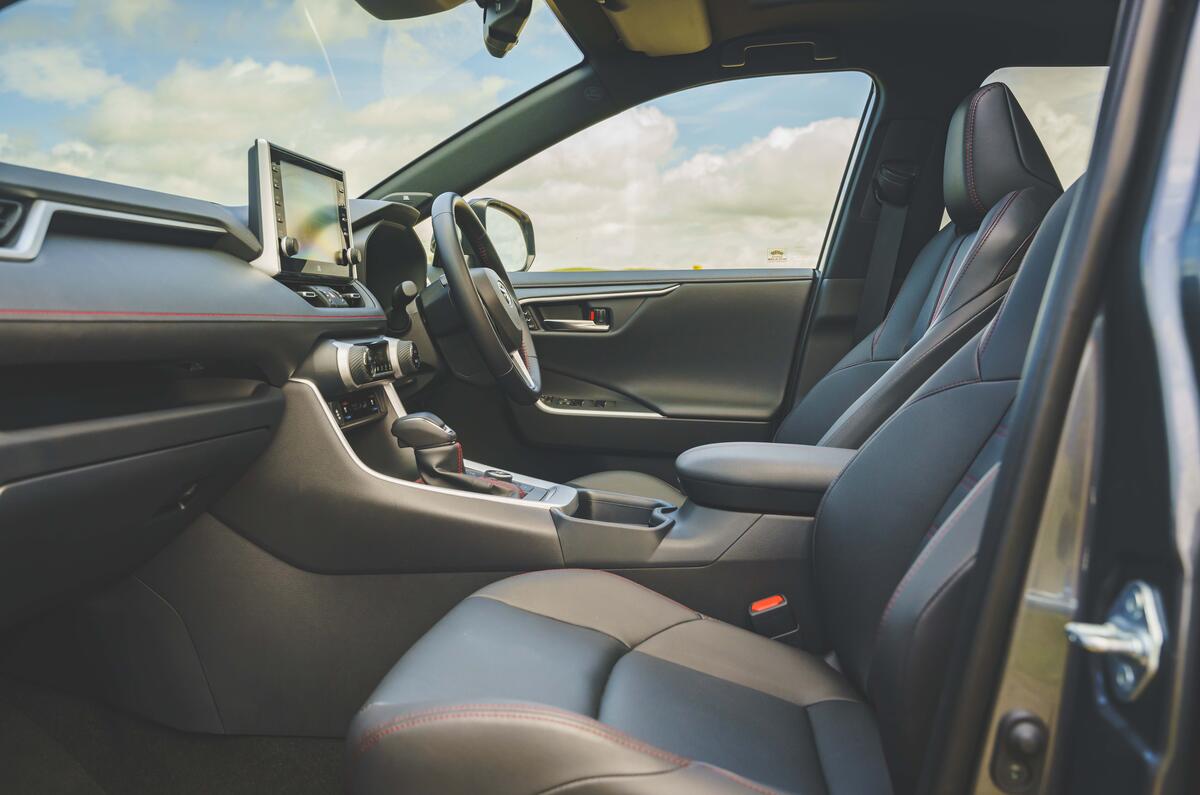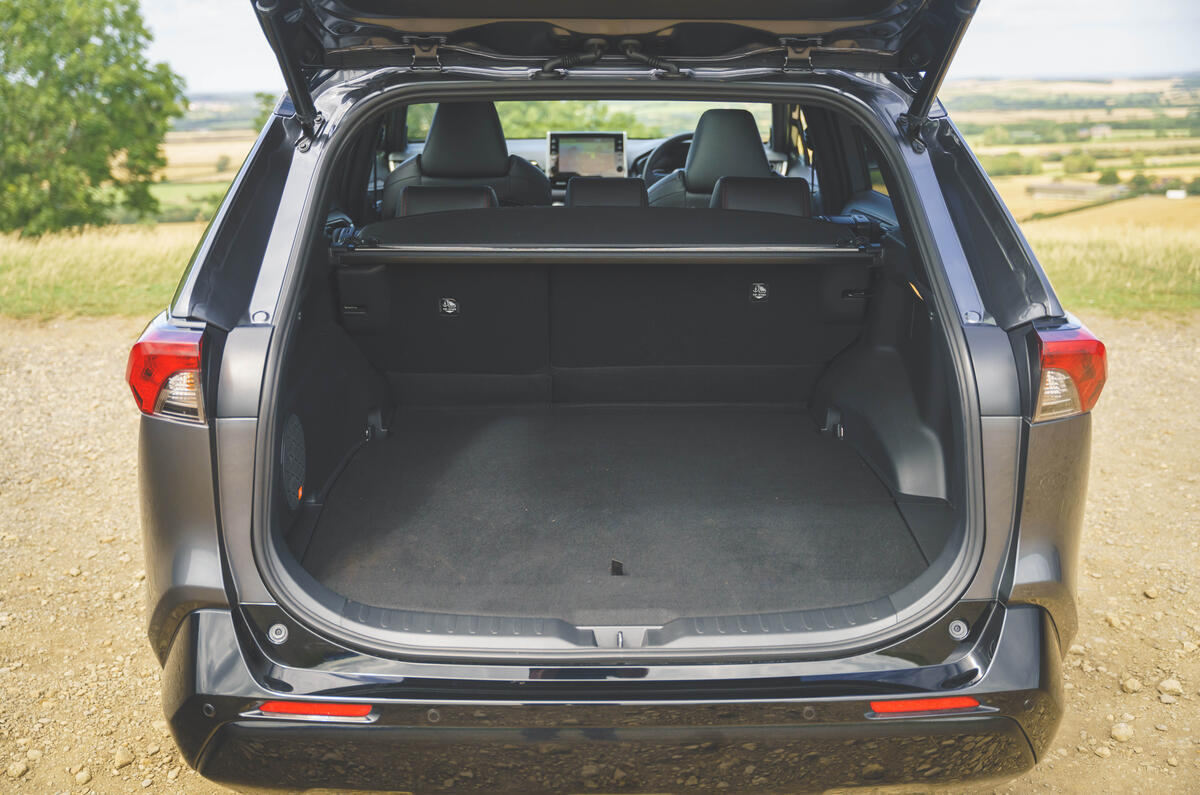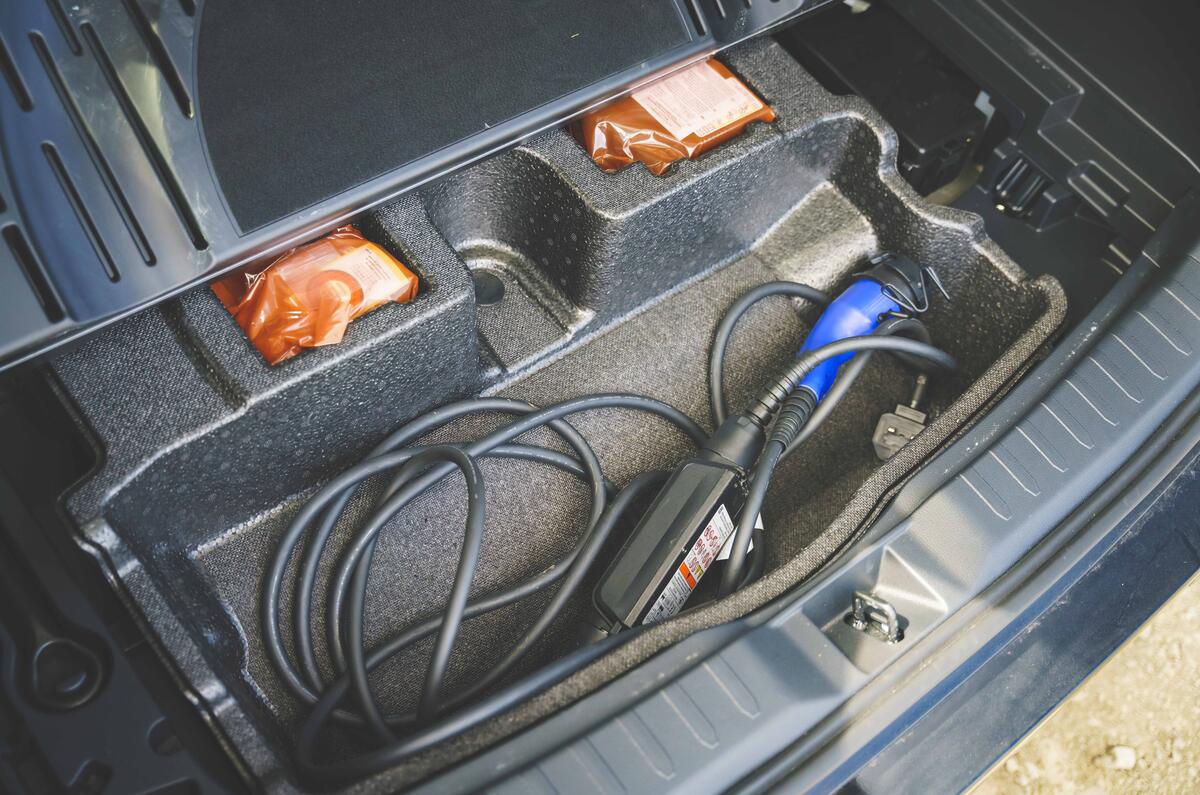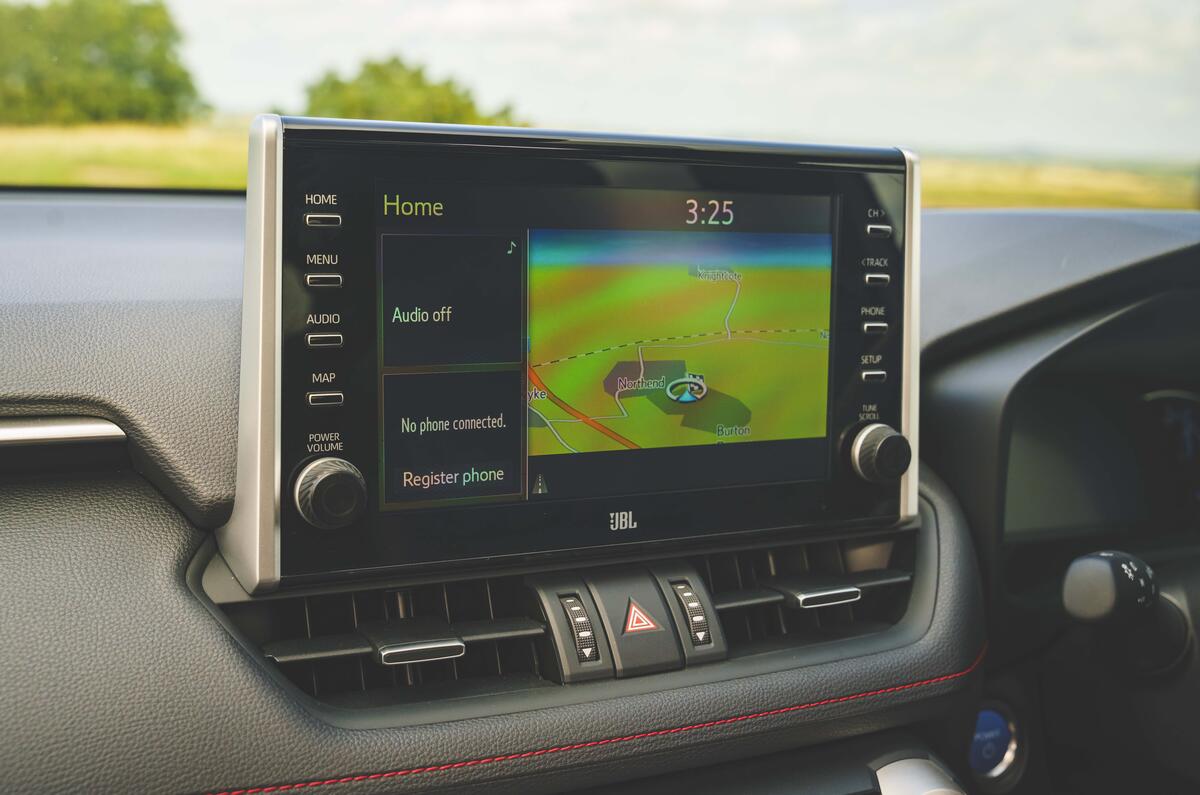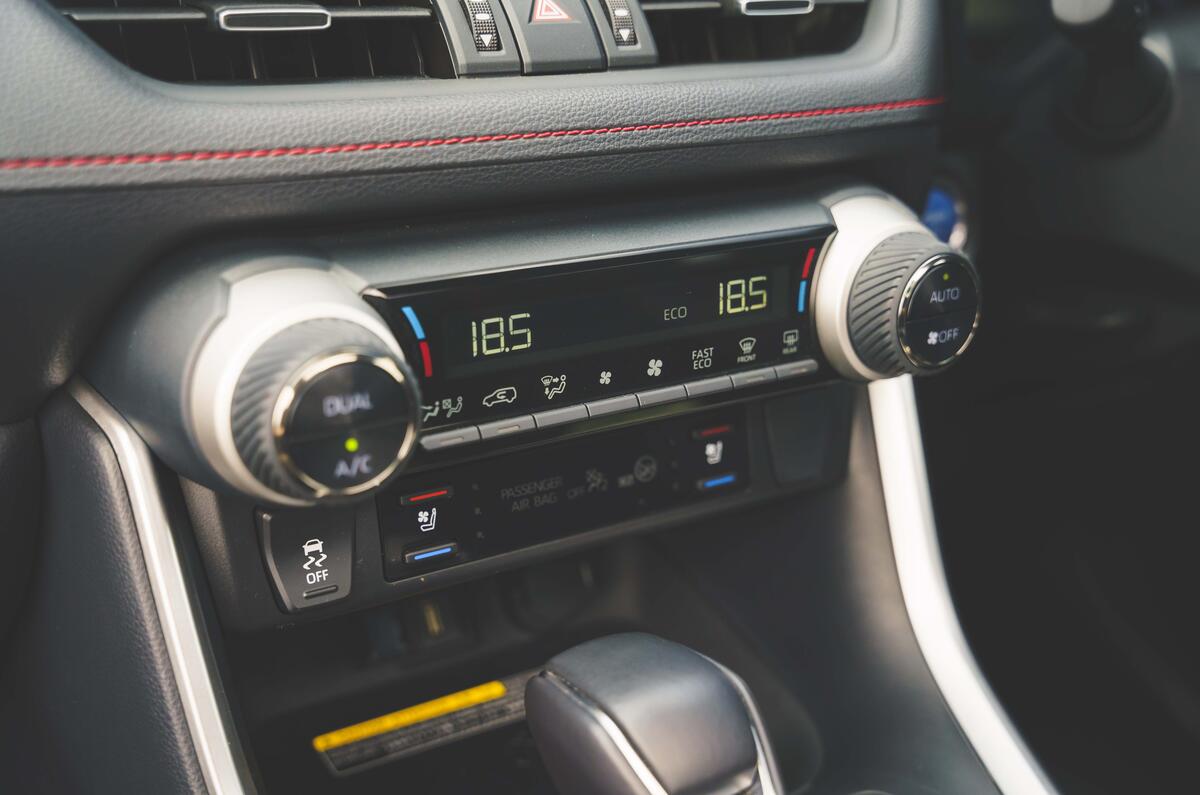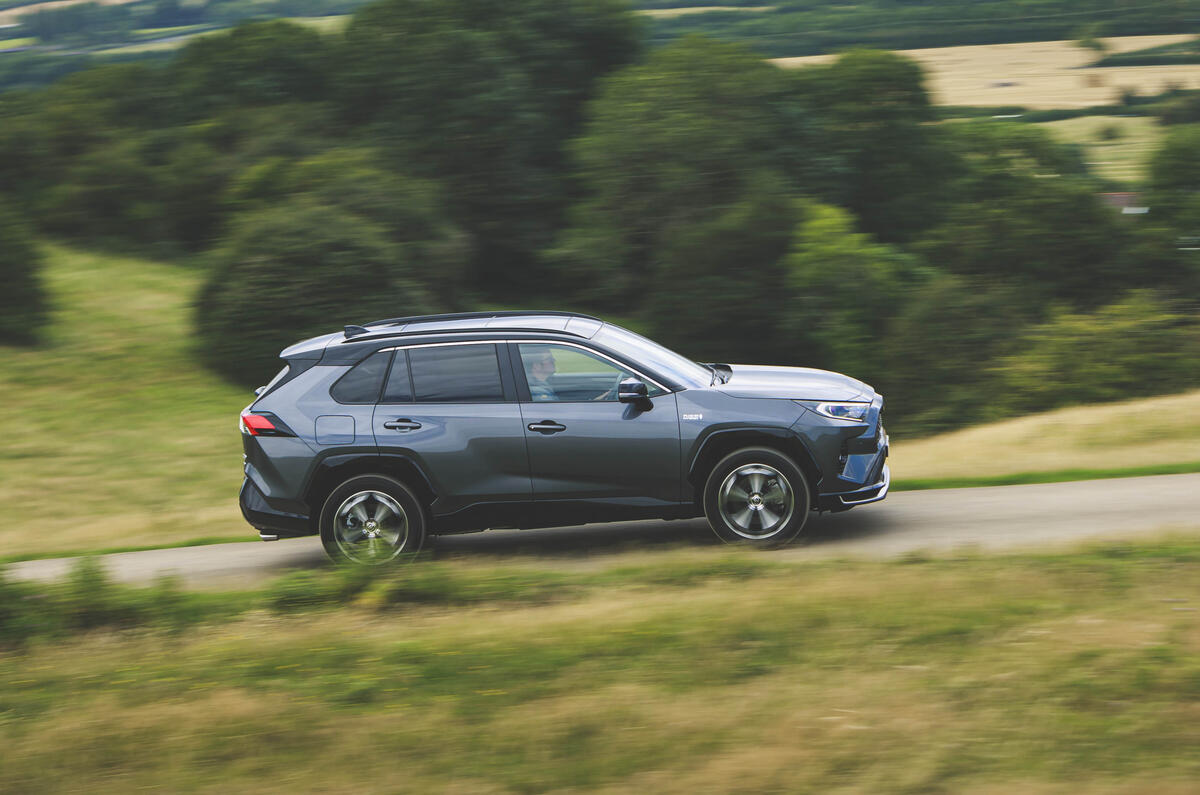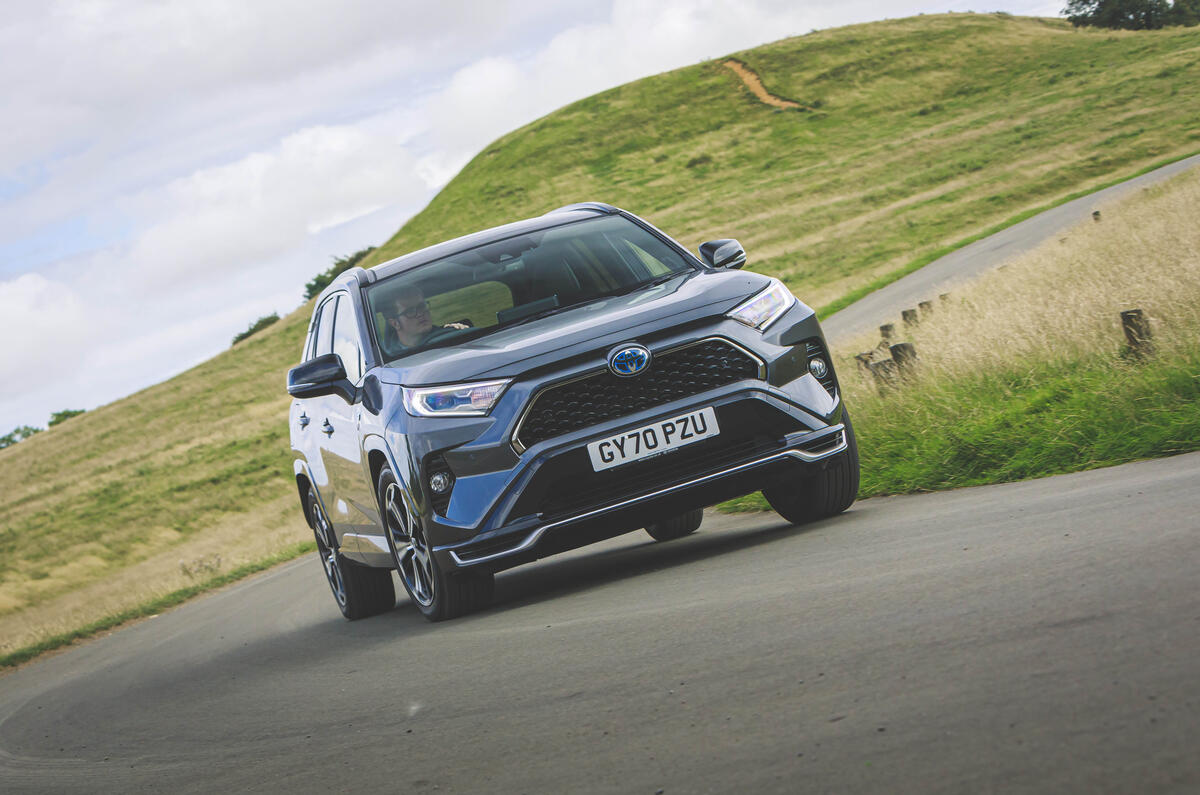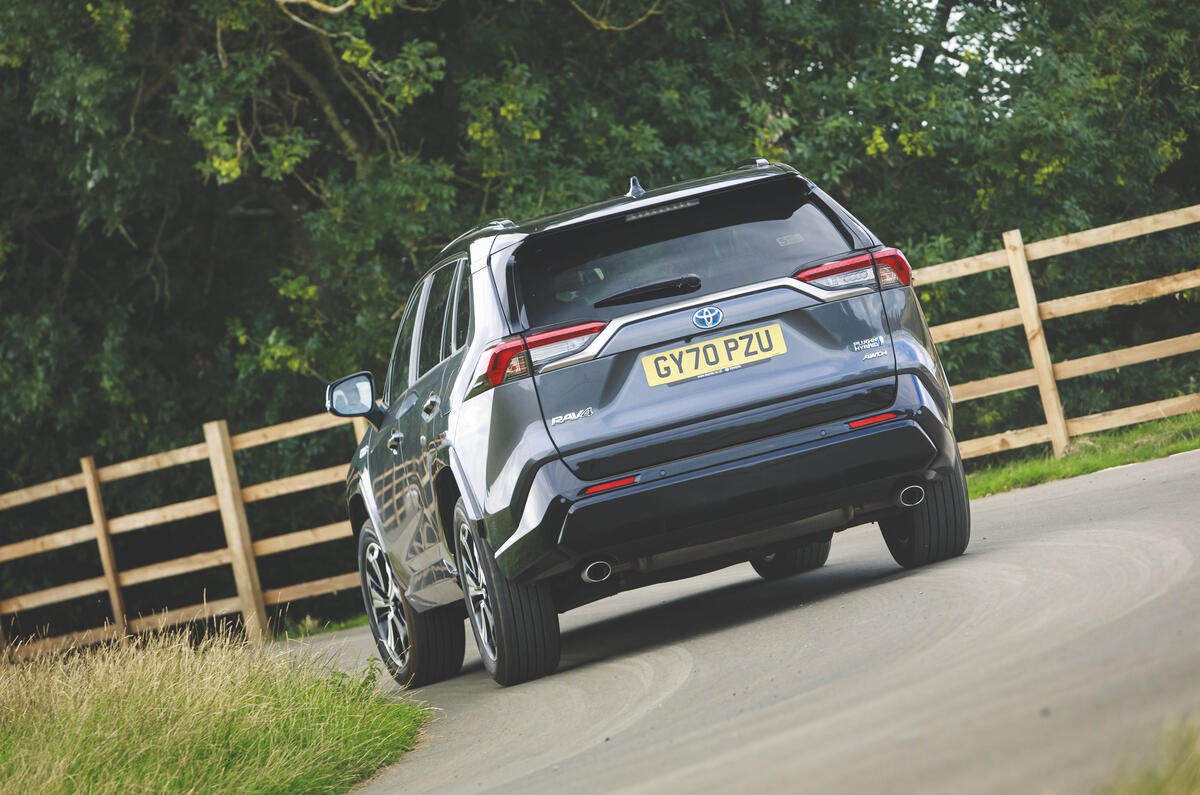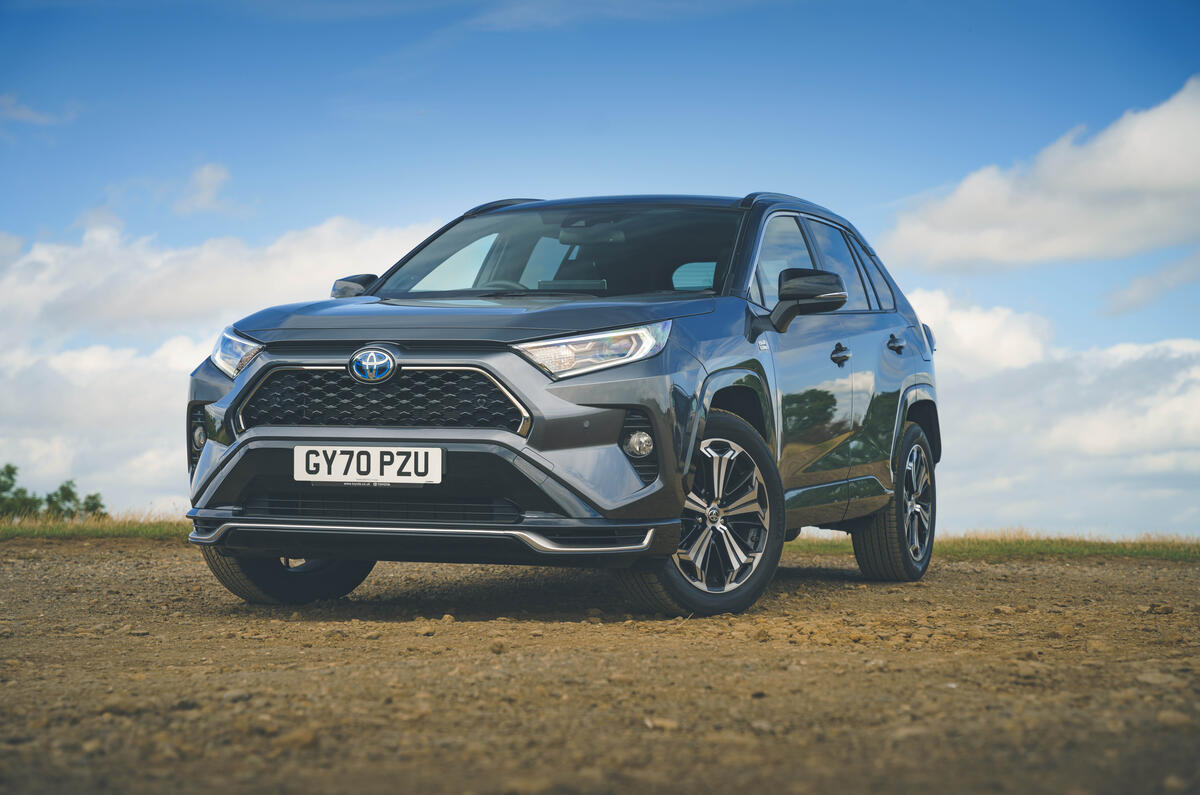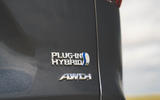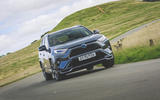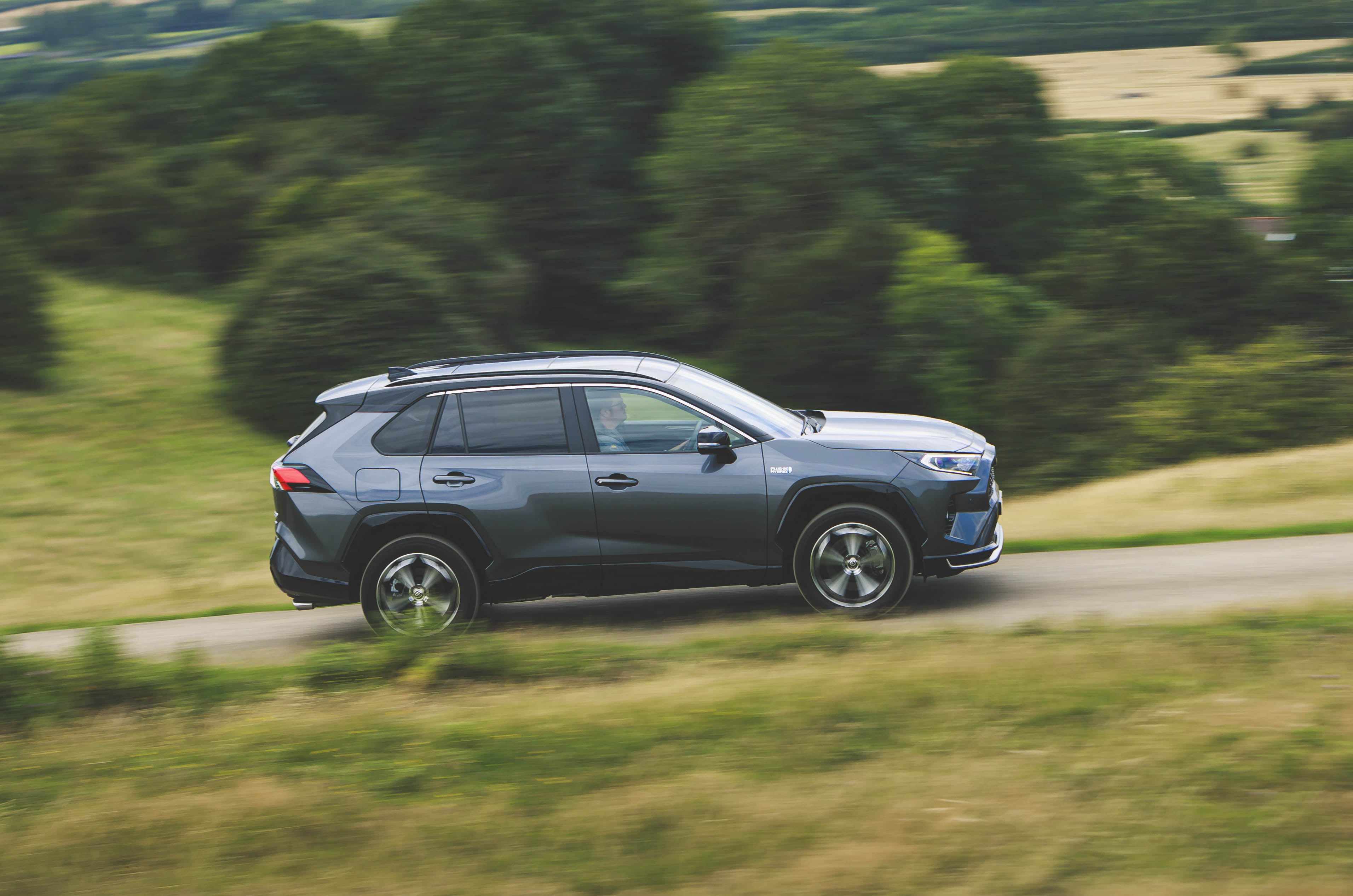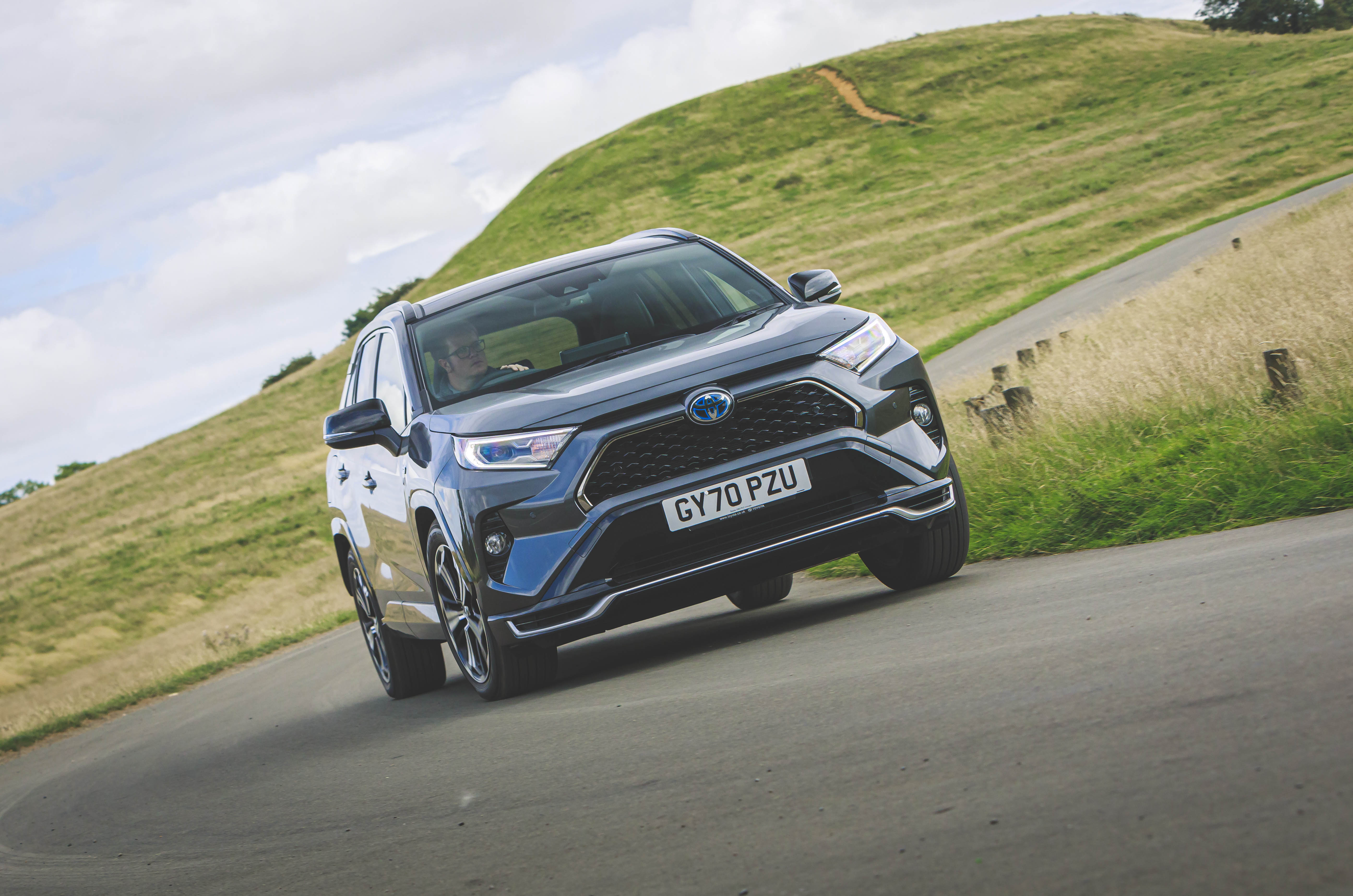The RAV4’s interior has been well-prepared for everyday family life. There’s plenty of space for up to five occupants, with taller adults able to find enough space in the back pretty easily (although there’s no sliding back seat functionality here).
Access is easy too, and the seats are comfortable, while the good-sized boot offers more than 500 litres of loading volume below the tonneau cover, rising to more than 1600- up to the roof with the seats folded. There’s a little bit more cargo space still in a regular hybrid than in a PHEV, and the latter doesn’t have room for a spare wheel where the former does – but still offers plenty of versatility.
There’s a distinctly high-quality feel about the car’s switches and fittings: one that isn’t overly rich, luxurious or glitzy, but is all about solidity and integrity of materials. The interior tends to prefer bigger switches and knobs to smaller, fiddlier ones, and secures all very robustly.
The driving environment is made up of a medium high-set seat offering good visibility, in front of a hybrid analogue/digital instrument layout and alongside a raised centre console that makes the transmission and handbrake controls easy to reach. If you’re taller than 6ft 3in there’s a chance you’ll notice a slight shortage of driver’s leg- and headroom compared with some mid-sized SUVs, but you’d have to be very tall indeed to be inconvenienced by it.
You get big physical controls for the heating system and most active safety and convenience systems too, so the car becomes easy to operate once you’re familiar with its layout. Likewise, the digital dashboard and head-up display can bamboozle you with lots of information at first, but once you’ve configured them to your liking there’s little extraneous information broadcast or important info left out. Setting up the head-up display to display a rev-counter is a real boon if you like to know exactly when the combustion engine is running, and how hard it’s working, for example.
Cabin storage is plentiful, with good-sized door cubbies ready to accept drinks bottles; an armrest cubby deep enough for purses and tablet PCs; and a grippy rubber pad at the base of the centre stack to hold your smartphone steady on the car’s wireless charging pad. A half-sized glovebox in right-hand drive cars is the only annoyance on that score.
The car’s Touch 2 infotainment system is fairly easy to navigate and displays its menus and mapping clearly enough. It won’t win many fans for its graphical sophistication or its roster of connected features, but it does offer smartphone mirroring for both Apple and Android phones, and plenty of USB device charging ports in both rows of seats. You have to lavish top-of-the-range cash on a Dynamic Premium trim car to get a JBL nine-speaker audio system and a head-up display, though (both are worth the money), while entry-level Design-trim PHEVs don’t get wireless device charging.




